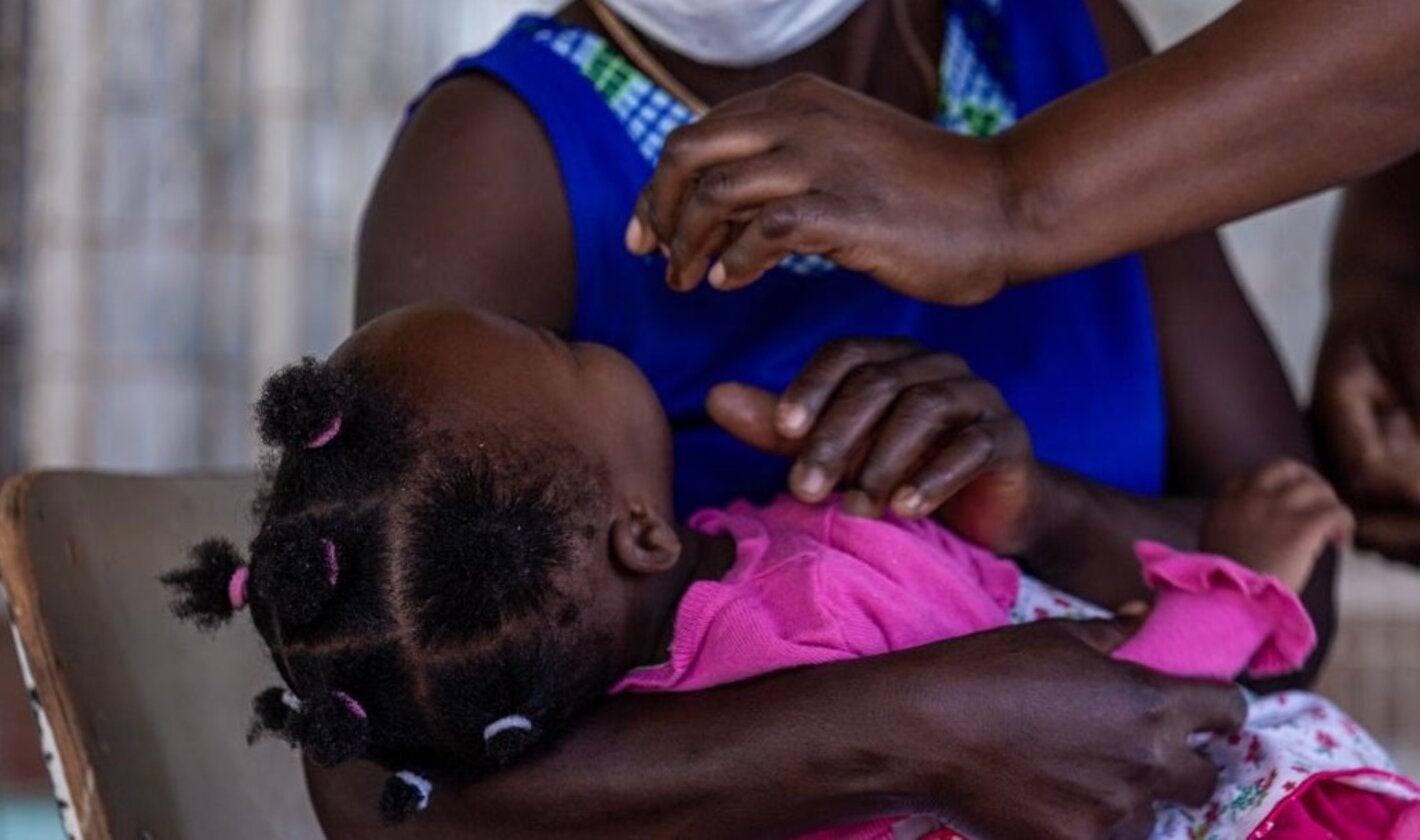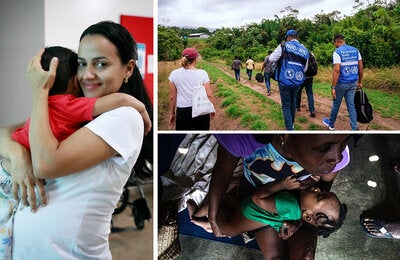
WHO and UNICEF sound the alarm as new data shows global vaccination coverage continued to decline in 2021, with 25 million infants missing out on lifesaving vaccines. In the Americas, last year alone more than 2.6 million children were unvaccinated or not fully up to date on their immunizations.
Geneva/New York, 15 July 2022- The largest sustained decline in childhood vaccinations in approximately 30 years has been recorded in official data published today by WHO and UNICEF.
The percentage of children who received three doses of the vaccine against diphtheria, tetanus and pertussis (DTP3) – a marker for immunization coverage within and across countries – fell 5 percentage points between 2019 and 2021 to 81 per cent.
As a result, 25 million children missed out on one or more doses of DTP through routine immunization services in 2021 alone. This is 2 million more than those who missed out in 2020 and 6 million more than in 2019, highlighting the growing number of children at risk from devastating but preventable diseases. The decline was due to many factors including an increased number of children living in conflict and fragile settings where immunization access is often challenging, increased misinformation and COVID-19 related issues such as service and supply chain disruptions, resource diversion to response efforts, and containment measures that limited immunization service access and availability.
“This is a red alert for child health. We are witnessing the largest sustained drop in childhood immunization in a generation. The consequences will be measured in lives,” said Catherine Russell, UNICEF Executive Director. “While a pandemic hangover was expected last year as a result of COVID-19 disruptions and lockdowns, what we are seeing now is a continued decline. COVID-19 is not an excuse. We need immunization catch-ups for the missing millions or we will inevitably witness more outbreaks, more sick children and greater pressure on already strained health systems.”
18 million of the 25 million children did not receive a single dose of DTP during the year, the vast majority of whom live in low- and middle-income countries, with India, Nigeria, Indonesia, Ethiopia and the Philippines recording the highest numbers. Among countries with the largest relative increases in the number of children who did not receive a single vaccine between 2019 and 2021 are Myanmar and Mozambique.
Globally, over a quarter of the coverage of HPV vaccines that was achieved in 2019 has been lost. This has grave consequences for the health of women and girls, as global coverage of the first dose of human papillomavirus (HPV) vaccine is only 15%, despite the first vaccines being licensed over 15 years ago.
In the Americas, vaccination rates against polio, measles, rubella, diphtheria and other vaccine preventable diseases had been decreasing for the past ten years, and this trend was exacerbated by the pandemic. In 2021, more than 2.6 million children were unvaccinated or not fully up to date with their immunizations, making them susceptible to diseases such as polio, tetanus and diphtheria. Regional coverage for the third dose of DTP fell from 91% in 2016 to 80% in 2021, and coverage for the first dose against measles, mumps and rubella (MMR1) dropped to 83% - an eight per cent decrease since 2016.
The Pan American Health Organization (PAHO) has been working with countries in Latin America and the Caribbean to strengthen routine immunizations programs and catch-up campaigns. PAHO is also supporting countries in surveillance to detect emerging outbreaks and ensure a timely response to avoid further transmission of vaccine preventable diseases.
PAHO recommends that countries strengthen the infrastructure of national immunization programs, taking advantage of investments made during the COVID-19 vaccine roll-out. Continuous improvement to vaccine cold chain operations, public communication efforts and the overall operation of health services are key to bring all children up to date on vaccines.
“Planning and tackling COVID-19 should also go hand-in-hand with vaccinating for killer diseases like measles, pneumonia and diarrhea,” said Dr Tedros Adhanom Ghebreyesus, WHO Director-General. “It’s not a question of either/or, it’s possible to do both”.
Monumental efforts will be required to reach universal levels of coverage and to prevent outbreaks. Inadequate coverage levels have already resulted in avoidable outbreaks of measles and polio in the past 12 months, underscoring the vital role of immunization in keeping children, adolescents, adults, and societies healthy.
The sharp two-year decline follows almost a decade of stalled progress, underscoring the need to not only address pandemic-related disruptions but also systemic immunization challenges to ensure every child and adolescent is reached.
WHO and UNICEF are working with Gavi, the Vaccine Alliance and other partners to deliver the global Immunization Agenda 2030 (IA2030), a strategy for all countries and relevant global partners to achieve set goals on preventing diseases through immunization and delivering vaccines to everyone, everywhere, at every age.
“It’s heart-breaking to see more children losing out on protection from preventable diseases for a second year in a row. The priority of the Alliance must be to help countries to maintain, restore and strengthen routine immunization alongside executing ambitious COVID-19 vaccination plans, not just through vaccines but also tailored structural support for the health systems that will administer them,” said Dr Seth Berkley, CEO of Gavi, the Vaccine Alliance.
Notes for editors:
Access the UNICEF dataset (data will be updated to reflect the new WUENIC release once embargo lifts): Overview page, Full datasets, Data visualisation, Country profiles
Access the WHO dataset (data will be updated to reflect the new WUENIC release once embargo lifts): Global dashboard, Full datasets, information page
Download content: photo gallery and social media content, immunization page, coverage fact sheet and WUENIC Q&A, UNICEF multimedia and immunization page
Read the Guiding Principles for recovering, building resiliency, and strengthening of immunization in 2022 and beyond here
About the data
Based on country-reported data, the official WHO and UNICEF estimates of national immunization coverage (WUENIC) provide the world’s largest and most comprehensive data-set on immunization trends for vaccinations against 13 diseases given through regular health systems - normally at clinics, community centres, outreach services, or health worker visits. For 2021, data were provided from 177 countries.



